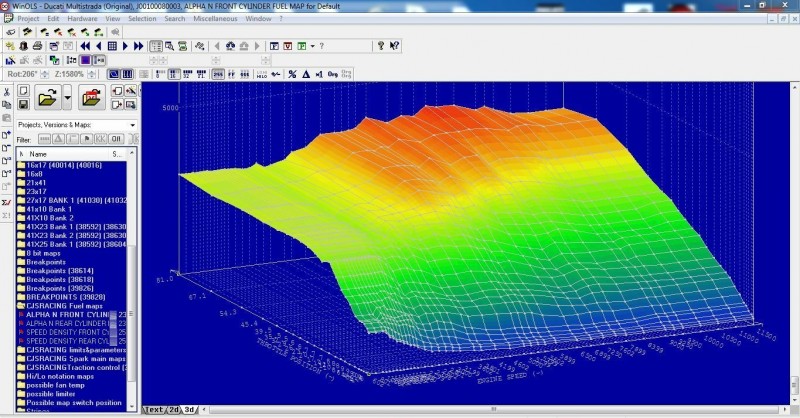High Quality Chiptuning File Service Dyno 24/7 Support
High Quality Chiptuning File Service Dyno 24/7 Support
Blog Article
Tuning files are an integral component of automotive tuning, allowing enthusiasts and professionals to optimize vehicle performance by modifying the engine control unit (ECU). Whether you're a beginner looking to understand the basics or an experienced tuner seeking advanced insights, this comprehensive guide will walk you through the essentials of tuning files.
What Are Tuning Files?

Tuning files are digital modifications to a vehicle’s ECU software. The ECU acts as the brain of a vehicle, controlling critical functions like fuel injection, ignition timing, turbo boost, and more. By altering the tuning files, users can enhance performance, improve fuel efficiency, or customize driving dynamics.
Tuning files are tailored to specific vehicles and engine types. They are typically created by reading the original ECU data, analyzing it, and then making adjustments using specialized software. Once modified, the updated file is written back to the ECU, effectively reprogramming it.
Benefits of Tuning Files
- Increased Performance:
- Adjust parameters like air-to-fuel ratio and ignition timing to unlock more horsepower and torque.
- Improved Fuel Efficiency:
- Optimize fuel delivery for better mileage, especially useful for daily drivers.
- Enhanced Driving Experience:
- Fine-tune throttle response, gear shifts, and turbo lag for smoother handling.
- Customization:
- Tailor settings to your specific driving needs, such as off-road adventures or track performance.
- Compatibility with Aftermarket Upgrades:
- Integrate new components like turbochargers or exhaust systems seamlessly.
Types of Tuning Files
- Stage 1 Tuning:
- Focuses on software changes without requiring hardware modifications.
- Ideal for stock vehicles.
- Stage 2 Tuning:
- Requires aftermarket hardware like upgraded exhaust systems.
- Offers more significant performance gains.
- Stage 3 and Beyond:
- Involves extensive hardware changes, including upgraded turbochargers and fuel systems.
- Designed for high-performance applications.
- Custom Tuning:
- Completely tailored to the driver’s preferences and specific vehicle setup.
How Are Tuning Files Created?
Creating tuning files involves several steps:
- Reading the ECU:
- Use diagnostic tools like KESS, K-TAG, or MPPS to extract the original ECU data.
- Analyzing the File:
- Specialized software such as WinOLS or ECM Titanium helps identify and modify key parameters.
- Making Adjustments:
- Adjust maps for fuel injection, ignition timing, turbo boost, and more based on desired outcomes.
- Writing the Modified File:
- Upload the updated file back to the ECU using the same diagnostic tool.
- Testing:
- Perform road tests or use a dynamometer to validate the changes and ensure reliability.
Tools and Software for Tuning Files
- Diagnostic Tools:
- Examples: KESS, K-TAG, MPPS, Autotuner.
- Purpose: Reading and writing ECU data.
- Editing Software:
- Examples: WinOLS, ECM Titanium, TunerPro.
- Purpose: Modifying ECU parameters.
- Data Logging:
- Tools like OBDLink or VCDS help monitor real-time vehicle performance.
- Dyno Testing:
- Ensures accuracy and helps fine-tune performance improvements.
Legal and Ethical Considerations
Modifying tuning files can have legal and environmental implications. Before making changes:
- Check Local Regulations:
- Some regions have strict laws against altering emissions controls.
- Warranty Concerns:
- Tuning may void your vehicle’s manufacturer warranty.
- Environmental Impact:
- Be mindful of increased emissions from aggressive tuning setups.
- Use Reputable Sources:
- Download tuning files from trusted providers to avoid potential malware or unreliable modifications.
Common Challenges in ECU Tuning
- Complexity:
- Modern ECUs are highly advanced, making tuning more challenging without the right tools.
- Compatibility Issues:
- Not all tuning files work across different models or engine types.
- Risk of Damage:
- Incorrect modifications can lead to engine or transmission damage.
- Learning Curve:
- Requires understanding of engine dynamics and software tools.
Tips for Beginners
- Start Small:
- Begin with Stage 1 tuning to familiarize yourself with the process.
- Invest in Quality Tools:
- Reliable hardware and software reduce the risk of errors.
- Learn from Experts:
- Join forums, watch tutorials, or take courses on ECU tuning.
- Backup Original Files:
- Always save the factory settings before making changes.
The Future of Tuning Files
As automotive technology evolves, tuning files are also advancing:
- Hybrid and Electric Vehicles:
- Tuning focuses on optimizing battery management and motor performance.
- AI-Powered Tuning:
- Machine learning algorithms analyze driving habits and automatically adjust ECU parameters.
- Cloud-Based Solutions:
- Remote tuning through cloud platforms for convenience and scalability.
Conclusion
Tuning files unlock the full potential of your vehicle, offering a blend of performance, efficiency, and customization. While the process can seem daunting, the right tools, knowledge, and careful planning make it accessible to enthusiasts and professionals alike. Always approach tuning responsibly, considering legal, environmental, and technical aspects. With the insights shared in this guide, you’re well on your way to mastering the art of ECU tuning. Report this page